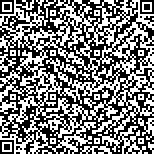| 李晴雨,杨 雷,张 希,等.北京市城区肺癌高危人群低剂量螺旋CT筛查依从性及其影响因素分析[J].中国肿瘤,2024,33(6):486-491. |
| 北京市城区肺癌高危人群低剂量螺旋CT筛查依从性及其影响因素分析 |
| Compliance and Its Influencing Factors of Low-Dose Computed Tomography Screening Among Residents with High-Risk of Lung Cancer in Urban Districts of Beijing |
| 投稿时间:2023-07-13 |
| DOI:10.11735/j.issn.1004-0242.2024.06.A010 |
|
 |
| 中文关键词: 肺癌 筛查 低剂量螺旋CT 依从性 影响因素 北京 |
| 英文关键词:lung cancer screening low-dose computed tomography compliance influencing factor Beijing |
| 基金项目:北京市医院管理中心“青苗”计划专项经费资助(QML20211102);北京大学肿瘤医院科研基金(2020-10) |
|
| 摘要点击次数: 367 |
| 全文下载次数: 184 |
| 中文摘要: |
| 摘 要:[目的] 分析2014—2019年北京市城区肺癌高危人群低剂量螺旋CT(LDCT)筛查依从性及其影响因素。[方法] 采用整群抽样方法,选取来自北京市东城、西城、朝阳、海淀、丰台和石景山共6个城区癌症早诊早治项目点的40~69岁北京市户籍居民进行问卷调查以评估癌症风险,对评估出的肺癌高危人群开展LDCT筛查。采用χ2检验比较不同特征人群的LDCT筛查参与率(依从性)差异,采用多因素非条件Logistic回归模型分析其影响因素。[结果] 共88 044名北京市城区居民参与调查,其中20 371人被评估为肺癌高危人群,高危率为23.1%。有10 645人接受了LDCT筛查,总体参与率为52.3%。多因素Logistic回归分析显示,女性、50岁及以上年龄组、大学/大专及以上学历、存在有害职业暴露、家庭做饭时油烟较多、有被动吸烟史、自报存在精神创伤或压抑的人群LDCT筛查依从性更好,目前正在吸烟的人群依从性较差。[结论] 北京市城区肺癌高危人群的LDCT筛查依从性仍有提升空间。未来应针对不同特征人群实施更加精准的健康教育和管理策略,进一步提高肺癌高危人群的LDCT筛查依从性。 |
| 英文摘要: |
| Abstract:[Purpose] To analyze the compliance and its influencing factors of low-dose computed tomography(LDCT) screening in high-risk population of lung cancer in urban districts of Beijing from 2014 to 2019. [Methods] Permanent residents aged 40~69 years old from community sites of Beijing Cancer Early Diagnosis and Treatment Project in six urban districts(Dongcheng,Xicheng,Chaoyang, Haidian, Fengtai and Shijingshan) of Beijing were recruited by cluster sampling method, and questionnaire survey was conducted to assess their risk of cancer. The residents assessed as at high-risk of lung cancer were advised to have LDCT screening in designated hospitals. Chi-square tests were adopted to compare the differences in participation rate(compliance) of the LDCT screening among various groups, and the multivariate unconditional Logistic regression model was used to explore factors related to the compliance of LDCT screening. [Results] A total of 88 044 residents completed the questionnaire survey, 20 371 cases(23.1%) were identified as a high-risk individual of lung cancer, among whom 10 645 subjects received LDCT screening, with an overall participation rate of 52.3%. The multivariate analysis showed that female, people aged over 50 years old, those with university/college degree or above, history of harmful occupational exposure, frequent exposure to cooking fumes at home, passive smoking, self-reported menta trauma or depression were more likely to accept LDCT screening; while current smokers had poorer compliance(all P<0.05). [Conclusion] There is still room for improvement in compliance of LDCT screening among high-risk population of lung cancer in urban districts of Beijing. Targeted health education and mana-gement strategies should be implemented in high-risk population with different characteristics to further improve the compliance of LDCT screening. |
|
在线阅读
查看全文 查看/发表评论 下载PDF阅读器 |